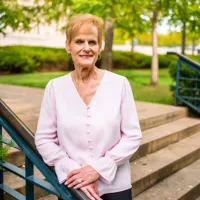
Six Powerful Shifts for a More Vital Leadership Nominations Approach
For many, this is the time of year when new leaders are being recruited by the Committee on Nominations. Some might even refer to it as the “arm-twisting” or “phone call avoidance” season. Others view it as a time of musical chairs for committee members or getting through the process of completing that darn charge conference paperwork.
However you reference this season, please allow me to offer a few thoughts for your consideration. The process of nominations and the role of the Nominations Committee can be a critical and pivotal season in the life of your church. It all depends on the understanding, equipping, and approach that starts with the approach to nominations! Following are some pivotal shifts the Committee on Nominations can make to strengthen the process, outcomes, and vitality of the church.
The committee responsible for this work is named in the UMC Book of Discipline (❡258.1) as the Committee on Nominations and Leadership Development. Their responsibilities are to not only discern leadership for nomination, they are also responsible for developing leaders. Being a member of this committee is a year-round position - not only a few weeks in the fall for nominating leaders. If your church is lacking a leadership development process, check out the book, Launching Leaders: Taking Leadership Development to New Heights, for a resource to get you started.
The process of nominations is one of discernment. It is not thumbing through the latest pictorial or membership directory to ascertain who hasn’t been a recent victim and can be persuaded to say yes to a hole on a committee. Ask potential leaders to fill out an interest form (see R-6, page 246-7in Mission Possible 3 for an example) to identify why they feel they are being called into leadership in this season, their spiritual practices, their leadership and spiritual gifts, their hopes for the future of the church, etc. The committee can then conduct holy conversations with potential leaders (see R-7, page 248-9 in Mission Possible 3 for example questions).
Potential leaders are supplied with the job descriptions and expectations for any leadership positions they are being considered for. Setting low (or no) expectations is contradictory to building high-capacity leaders who are engaged, committed, and passionate about the leadership role and its potential for impact.
The Nominations Committee prays and discerns together after the holy conversations with potential leaders for which leaders have the giftedness, commitment, and passion for leading the church in this season. Only then are leaders invited to be nominated for a leadership position.
Shifting away from recruiting people who possess skills in specialty areas is a huge step for many churches. This has been the traditional approach to naming members of the administrative committees (finance, pastor-parish relations, trustees). First and foremost, leaders of the administrative committees need to be mature disciples and servant leaders. Their area of expertise in real estate, banking, plumbing, construction, etc. is a bonus not the primary driver for membership. Without first being a mature disciple, leaders in these positions can easily make decisions without the missional focus of making disciples as their primary filter. People with expertise can always be called in to confer and consult with the spiritual leaders in administrative positions as needed. Leaders first and foremost need to model well-developed spiritual leadership. This is another reason why the leadership development process is such an important part of the work of the Nominations Committee.
The members of the Committee on Nominations and Leadership Development will likely need to be retooled for these shifts in fulfilling their role and responsibilities. As new members roll onto the committee, they will also need to be trained so they, too, can shift into a new mindset for their role. Check out the on-demand training for members of the Committee on Nominations and Leadership Development.
Too many times, people will more eagerly take the position on the Nominations Committee than other committees because its commitment is low. The committee is only active for only a few weeks a year. It requires a few meetings and phone calls and then members are finished until the next year. It is often seen more as filling in all the blanks on their required charge conference paperwork than it is about developing mature servant leaders who will not only lead their church, but will also lead the greater community with a spiritual foundation lens. Consider making the shift in your church’s nominations approach this season to begin the journey towards healthier leaders and a more vital congregation.
Additional Resources for the members of the Committee on Nominations and Leadership Development:
Launching Leaders Small Group Study
Launching Leaders On-Demand Webinar

